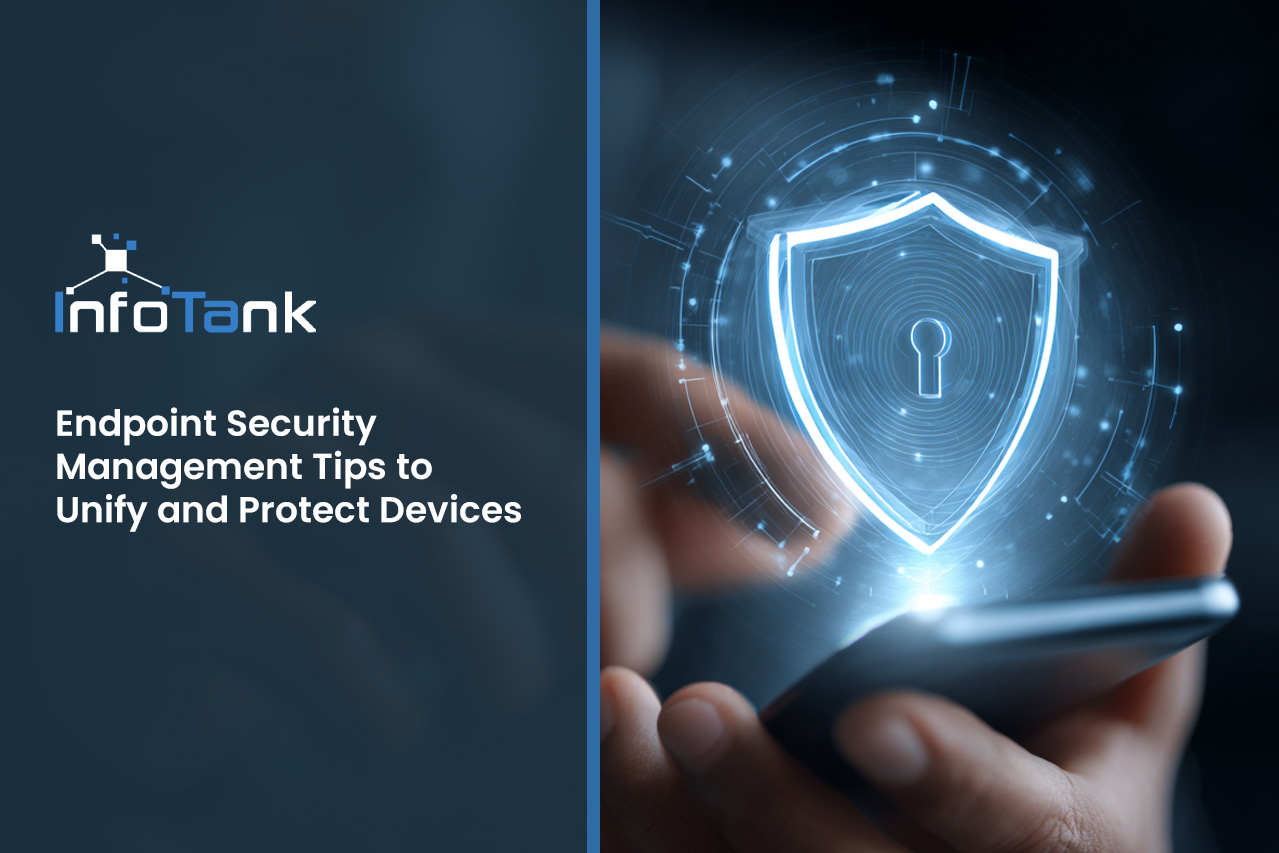
Endpoint Security Management Tips to Unify and Protect Devices
Keeping your business devices secure is no longer optional. With more employees using laptops, phones, and tablets to access company data, the need for strong endpoint security management is critical. In this blog, you'll learn what endpoint security management is, why it matters, and how to manage endpoint devices effectively. We'll also cover common risks, tools, and best practices to help you protect your network and unify your security policies.
What is endpoint security management?
Endpoint security management is the process of securing all devices that connect to your network—like laptops, smartphones, and desktops. These devices, called endpoints, are often the first targets for cyberattacks. Managing them properly helps protect your data, users, and systems.
This type of management includes setting up security software, monitoring devices, and applying updates. It also involves creating and enforcing security policies that keep your business safe. A strong endpoint security strategy supports your overall network security and helps prevent threats before they spread.

Key strategies for managing endpoint security effectively
Managing endpoint security takes more than just installing antivirus software. Here are some important strategies to help you stay protected.
Strategy #1: Create clear management policies
Start with written rules that explain how devices should be used and protected. These policies should cover password rules, software updates, and what to do if a device is lost or stolen.
Strategy #2: Use endpoint detection and response tools
These tools help you spot threats early by monitoring device activity. They can alert your team to suspicious behavior and help you respond quickly. For more information on these tools, check out endpoint detection and response.
Strategy #3: Keep endpoint protection platforms updated
Outdated software is a major risk. Make sure your endpoint protection platforms are always up to date to block the latest threats.
Strategy #4: Limit access based on device type
Not all devices need full access to your network. Use device management tools to control what each type of endpoint can do.
Strategy #5: Train your team on security policies
Your security is only as strong as your users. Teach employees how to recognize threats and follow your policies.
Strategy #6: Monitor for unusual behavior
Use security tools to track activity across your network. If something looks off, investigate right away.
Strategy #7: Plan for patch management
Regularly apply patches to fix known security issues. This keeps your systems protected against known vulnerabilities.
Essential features of a strong endpoint security system
A good endpoint security system should include the following features:
- Real-time threat detection to catch issues as they happen
- Centralized control for managing all devices from one place
- Support for mobile device management
- Integration with your existing security software
- Automated patch management to reduce manual work
- Reporting tools to track your security posture over time

Why unified endpoint management matters
Unified endpoint management (UEM) brings all your device controls into one system. This makes it easier to apply consistent security settings across all devices, whether they’re on-site or remote. UEM helps reduce gaps in protection and simplifies the job for your IT team.
By using a unified approach, you can manage both company-owned and personal devices more effectively. It also supports compliance with industry regulations by ensuring that all endpoints follow the same security standards.
Components of endpoint security you shouldn’t ignore
Endpoint security isn’t just one tool—it’s a combination of systems and practices. Here are the key components you need to understand.
Component #1: Endpoint security software
This includes antivirus, anti-malware, and firewall tools that protect individual devices. Choose software that fits your business size and needs.
Component #2: Device management systems
These systems let you control settings, install updates, and track devices. They’re essential for keeping endpoints secure and compliant.
Component #3: Network security integration
Your endpoint tools should work with your broader network security systems. This helps detect threats that move between devices and servers.
Component #4: Security threat response plans
Have a plan in place for when something goes wrong. Know who to contact, what steps to take, and how to recover quickly.
Component #5: Data encryption tools
Encrypting data on devices helps protect sensitive information, even if a device is lost or stolen.
Component #6: Role-based access controls
Limit access to sensitive data based on job roles. This reduces the risk of accidental or intentional misuse.

Practical steps to implement endpoint security management
Start by assessing your current setup. Identify all devices that connect to your network and check what protections they have. Then, choose a security solution that fits your needs—this could be a managed endpoint security service or an in-house system.
Next, set up your management policies and train your team. Make sure everyone understands their role in keeping devices secure. Finally, monitor your systems regularly and adjust your approach as needed. Security is not a one-time task—it’s an ongoing process.
Best practices for managing endpoint security
Follow these best practices to improve your endpoint security management:
- Keep all endpoint devices updated with the latest patches
- Use multi-factor authentication for added protection
- Regularly review and update your management policies
- Segment your network to limit the spread of threats
- Use advanced endpoint security tools for better visibility
- Test your response plans to ensure they work when needed
Following these steps can help you reduce risks and keep your business running smoothly.

How InfoTank can help with endpoint security management
Are you a growing business looking to secure your devices and data? If you're managing multiple endpoints and want a reliable way to protect them, we can help. Our team specializes in managed endpoint security solutions that scale with your needs.
We understand the risks and challenges of managing endpoint security. That’s why we offer tools, support, and strategies tailored to your business. Let InfoTank help you build a stronger, safer IT environment. Contact us today to get started.
Frequently asked questions
What is an endpoint and why does it need protection?
An endpoint is any device that connects to your business network, like a laptop, phone, or desktop. These devices are often targeted by hackers because they can be easier to breach than central servers. That’s why endpoint protection is essential.
By securing each endpoint, you reduce the chances of a security threat spreading through your network. It also helps maintain your overall security posture and keeps sensitive data safe.
How does endpoint security software work?
Endpoint security software monitors devices for suspicious activity and blocks known threats. It often includes antivirus, anti-malware, and firewall tools. These tools work together to stop attacks before they cause damage.
Using the right security software helps your security team stay ahead of risks. It also supports patch management by alerting you when updates are needed.
What are the benefits of unified endpoint management?
Unified endpoint management (UEM) lets you control all devices from one platform. This makes it easier to apply consistent security policies and track compliance.
UEM also helps you manage mobile device security and integrate with other security solutions. It simplifies your IT tasks and improves your network security.
Why are endpoint management policies important?
Endpoint management policies set the rules for how devices should be used and protected. These policies help reduce human error and ensure everyone follows the same security standards.
Clear policies also support your endpoint management system by guiding how devices are configured and monitored. They’re a key part of any effective endpoint strategy.
What types of endpoint security solutions are available?
There are many types of endpoint security solutions, including antivirus software, firewalls, and advanced endpoint detection systems. Some are managed in-house, while others are offered as managed services.
Choosing the right solution depends on your business size, device types, and security needs. A managed endpoint security provider can help you find the best fit.
What are the risks of not having endpoint security management?
Without endpoint security management, your devices are open to attacks. This can lead to data loss, downtime, and damage to your reputation. Even a single unprotected device can put your entire network at risk.
The need for endpoint security management is clear—especially as more employees work remotely. Managing endpoint security helps you stay protected and compliant.



